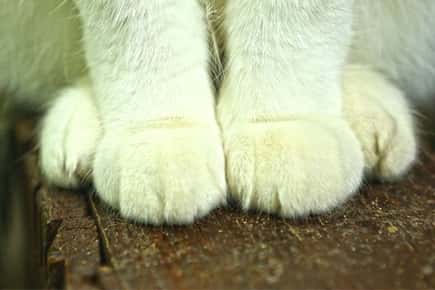
Cats are generally regarded as "self-grooming" pets, though they do need their humans for some grooming activities. One grooming technique cats are unable to perform on their own is trimming their front nails. While some indoor-only cats are de-clawed in the front (this means their claws have been removed by a veterinarian) rear claws are always left for cats. Cat claws will require trimming. Specialty cat nail trimmers are available in pet stores with the grooming tools.
Trimming cat nails is easier when the cat learns about nail cutting as a kitten. If you have your cat as a kitten, make a point to touch your kittens paws often, making them comfortable with the act of having their paws touched. Even adult cats can learn to let you touch their paws and clip their nails if you spend time just stroking their legs and paws before trying to clip them.
To trim the nails, you should hold the cat close to you. Some cats that are not used to having their nails clipped can be wrapped in a towel and held by one person while a second person clips the nails. If your cat is relaxed, you can let them sit on a table or floor while you clip their nails.
Take the paw you intend to clip in your hand. Push up on the bottom of the paw gently to spread the paw digits wide and expose the nail. Take the specially made cat clippers in your dominant hand and clip the nail. Take off only the white part of the nail, staying away from the pink part of the nail which is the "quick."
If you do cut the quick, it will bleed. It may also cause pain for your cat because not only is there a blood vessel in the quick, but a nerve ending as well. The bleeding should stop within a minute. If not, you should use styptic sticks to stop the bleeding. These are available in most pet stores. By trimming the nails often you will train the quick in the nail to recede. By training the quick to recede, you will have less of a chance of making your cat bleed.
The nails on the front paws may require trimming as much as twice as often as the rear claws. This is because rear claws are worn down when a cat reaches up to scratch themselves or cover their excrement in a litter box or dirt outside. In addition, cats can reach their back paws up to their mouth where they can chew on the nails and keep them short.
